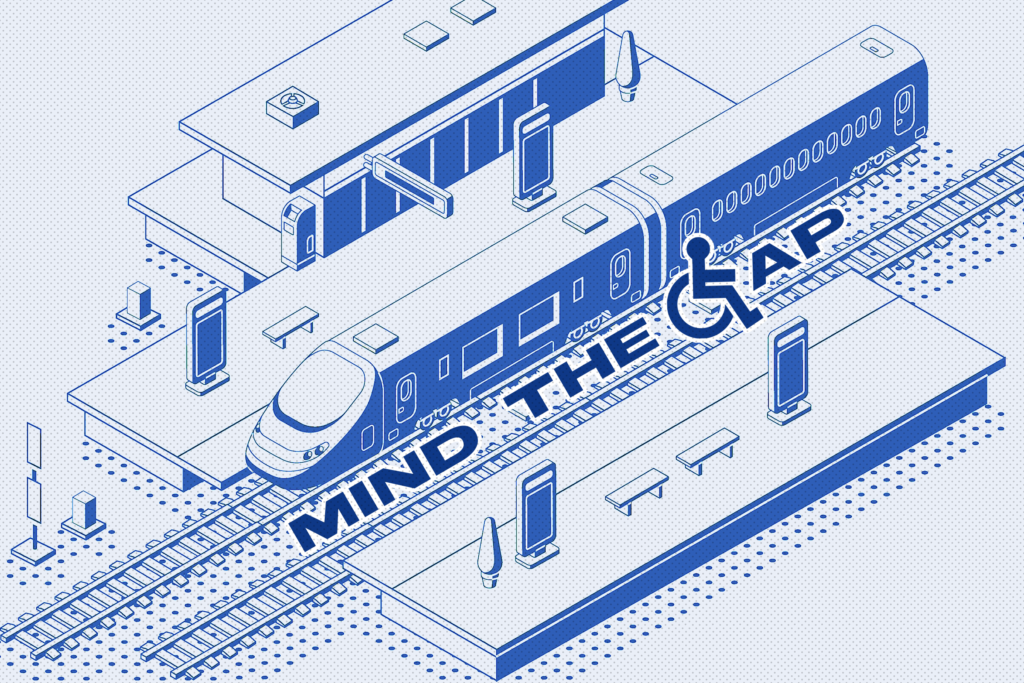‘Systemic shortcomings:’ Rappler spotlights not-so-PWD friendly rail system

CHEERS TO Rappler for its in-depth report and documentary on the plight of persons with disability (PWDs) who commute using the public rail system in Metro Manila. Both shed light on an underrepresented and often neglected sector and the barriers PWDs face in mobility.
What’s the Story?
The country’s public transportation system is saddled with problems. Media have highlighted different aspects of the issue just this year, such as the need for modernization without sacrificing the livelihoods of jeepney drivers, the lack of fuel and other subsidies amid rising oil prices, fare hikes, and transport strikes. One facet, however, of the transportation crisis that has not received equal attention is how accessible the system is to PWDs.
In an August 30 report, Pia Ranada discussed the findings of Rappler’s “accessibility walkthrough” of all 46 stations of the MRT-1, LRT-1, and LRT-2, which collectively make up the Metro Manila rail system. The exercise was intended to determine how accessible the system is for PWDs, whether they can travel “safely, independently, and with dignity” around Metro Manila. Rappler conducted the walkthrough with Kasali Tayo, a civil society group of PWDs advocating for inclusive transportation.
What the Report and Documentary Got Right
The walkthrough, conducted from August 7 to 14, showed that a disappointing 80 percent of train stations have entrances “not fully accessible” to PWDs. It also found that of the 20 stations in LRT-1, only five have elevators. Overall, Rappler found the biggest problem to be “inconsistency” and “unpredictability” since the implementation of accessibility measures and presence of PWD-inclusive facilities remained uneven across what should be a coordinated system.
The documentary counterpart of the report, titled “Pasadahan” and posted on YouTube on September 1, featured the typical commute of three PWDs with varying types of disabilities. In 19 minutes, it captured the difficulties PWDs must contend with. Aside from recording video footage, Rappler also interviewed the three PWDs to gain a deeper perspective into how PWDs must become their own advocates for the changes they need.
Other interviewees who contributed insights were Ira Cruz of Move As One Coalition, which advocates for accessible transport, and architect Armand Eustaquio, a specialist in PWD-inclusive built structures. Cruz argued that designing public infrastructure that takes into account the needs of PWDs benefits more than vulnerable sectors — it creates more accessible infrastructure for everyone. Eustaquio helped write the original Implementing Rules and Regulations (IRR) of Batas Pambansa Bilang 344 (BP 344), which mandates PWD-inclusive rail facilities. The IRR was last updated in 1994. Eustaquio revealed that an updated IRR has been written and endorsed to both the Public Works and the Transportation departments.
Both the report and the documentary ended with calls to action: Take up accessible commuting as a topic with friends and family and on social media. Show government officials that the issue matters and existing laws (like BP 344) need stricter implementation and updates. Demand for more legislation catering to the unique needs of PWDs. Hold lawmakers accountable for the shortcomings in the enforcement of the laws they created.
Ranada quickly issued a follow up article on September 5, which detailed how concerned Filipinos can do their part in helping achieve “accessible, humane” public transportation.
Why Is this important?
The rail system should be the cornerstone of public transportation in the capital. This is true in many other capitals around the world; this should be true as well in Metro Manila. PWDs, like any member of the Filipino public, rely on it to access different parts of the metropolis.
With the large volume of commuters using trains on a daily basis, the difficulties of PWD commuters can go unnoticed. This should not be the case. As an interviewee stressed in the documentary, if improving accessibility makes it better for PWDs, it makes it better for the entire commuting public.
Media should do more to promote the rights of marginalized sectors such as PWDs and to spotlight problems in policy and government action that affect them. Rappler’s report stressed: “The systemic shortcomings in Metro Manila’s train network boil down to two problems: lack of policies and shortcomings in implementation.” These are two areas the media can help — by amplifying the voices of advocates and by keeping close watch on how laws are enforced.
Leave a Reply